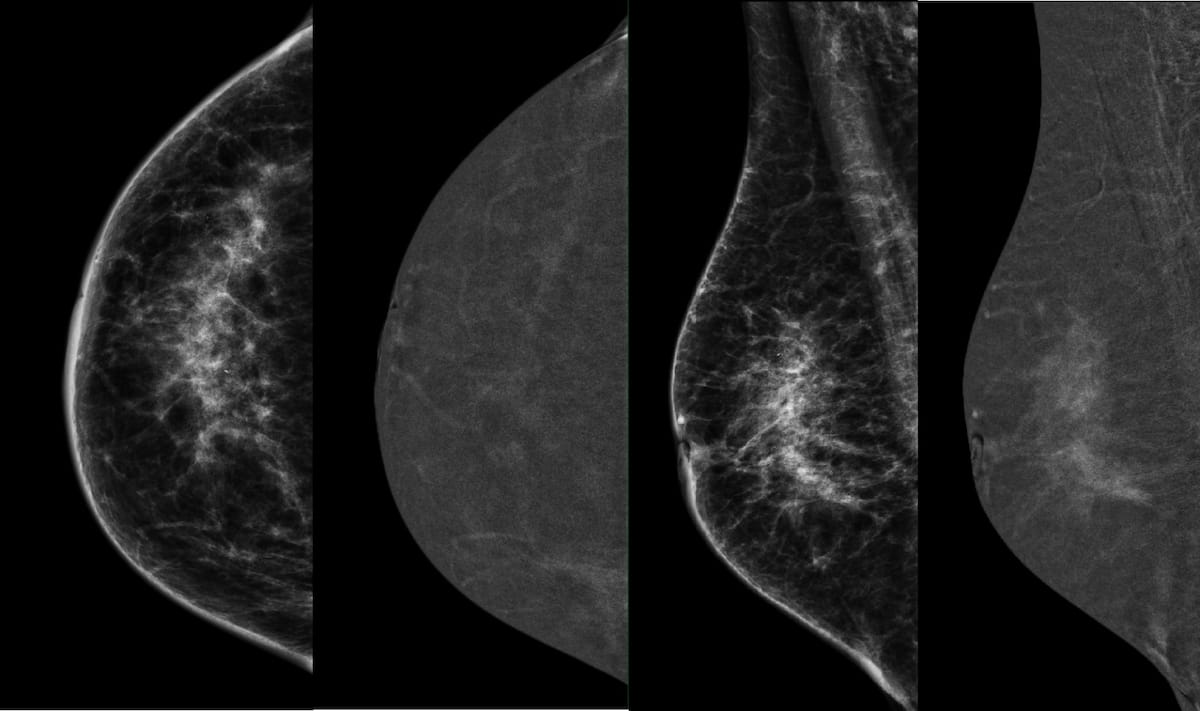Five Insights on Artifacts and Limitations with Contrast-Enhanced Mammography
Noting that technique issues, patient positioning miscues and atypical features can all contribute to faulty interpretation with contrast-enhanced mammography (CEM), researchers at the European Congress of Radiology shared their insights on navigating artifacts and limitations with CEM.
With the ongoing utilization and promise of contrast-enhanced mammography (CEM) to help assess tumoral neovascularization, researchers have also noted challenges with the imaging modality.
Accordingly, in a poster presentation at the European Congress of Radiology, researchers discussed key limitations as well as artifacts that can occur on CEM. Here are a few takeaways from their research.
1. Emphasizing that nipple enhancement artifacts tend to be asymmetrical in nature, the poster authors suggested using low-energy (LE) images to help differentiate between artifactual enhancement and pathologically thickened skin. They also noted that ultrasound can be beneficial in recognizing artifactual nipple enhancement caused by positioning issues.
2. The researchers cautioned that drops of contrast may mimic calcifications on CEM. However, they noted that actual calcifications will be black on recombined (RE) images whereas contrast agent will show up as white on LE and RE images.
While contrast-enhanced mammography revealed no pathological mass or non-mass enhancement, subsequent ultrasound imaging led to a confirming biopsy diagnosing invasive lobular carcinoma. (Images courtesy of the European Congress of Radiology.)

3. Premature breast compression may cause venous contrast retention and subsequent intensity in vascular opacification, according to the poster authors. They noted that resulting dense linear opacities corresponding to vascular structures may appear on initial LE and RE image acquisitions. If the dense linear opacities are still appearing on the last images acquired, the authors said one should suspect venous occlusion.
4. Due to weak enhancement on CEM, the poster authors noted that it may be difficult to differentiate some malignancies, such as invasive lobular carcinoma, papillary carcinoma, and mucinous carcinoma, from background parenchymal enhancement (BPE). For these challenging cases, they emphasized subsequent ultrasound imaging.
5. The combination of thick peripheral enhancement with a central or partial negative contrast enhancement (NCE) sign may occur with benign and malignant breast lesions, according to the poster authors. They pointed out that mucinous carcinoma may have low visibility on RE views and can be confused with pseudocystic lesions.
Reference
1. Constantin IL, Harguem S, Arfi-Rouche J, Baileyguier C. Contrast-enhanced mammography — artifacts and pitfalls. Presented at the European Congress of Radiology, February 28-March 3, 2024, Vienna, Austria. https://www.myesr.org/congress/
GE HealthCare Debuts AI-Powered Cardiac CT Device at ACC Conference
April 1st 2025Featuring enhanced low-dose image quality with motion-free images, the Revolution Vibe CT system reportedly facilitates improved diagnostic clarity for patients with conditions ranging from in-stent restenosis to atrial fibrillation.
New AI-Enabled Portable Ultrasound May Facilitate 50 Percent Reduction in Cardiac Imaging Scan Time
March 28th 2025Artificial intelligence (AI)-powered measurement capabilities provide key features with the Compact Ultrasound 5500CV device, which was unveiled at the American College of Cardiology (ACC) conference.
New Collaboration Offers Promise of Automating Prior Authorizations in Radiology with AI
March 26th 2025In addition to a variety of tools to promote radiology workflow efficiencies, the integration of the Gravity AI tools into the PowerServer RIS platform may reduce time-consuming prior authorizations to minutes for completion.
AI-Initiated Recalls After Screening Mammography Demonstrate Higher PPV for Breast Cancer
March 18th 2025While recalls initiated by one of two reviewing radiologists after screening mammography were nearly 10 percent higher than recalls initiated by an AI software, the AI-initiated recalls had an 85 percent higher positive predictive value for breast cancer, according to a new study.